What is NPS in Customer Service?

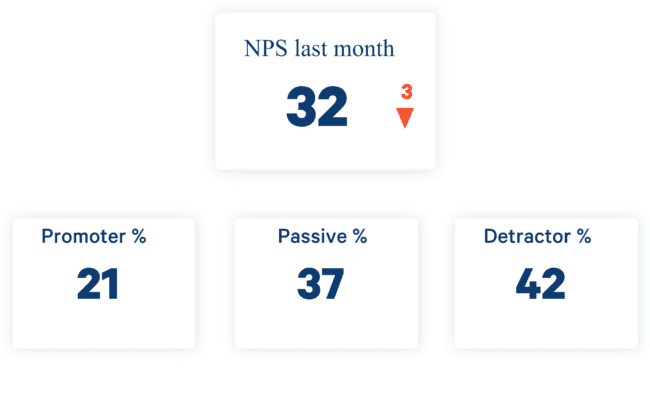
Understanding customer satisfaction is invaluable for any service business. One powerful tool that businesses use to measure and improve customer loyalty is the Net Promoter Score (NPS).
But what exactly is NPS, and why does it matter?
NPS is a straightforward yet impactful metric that gauges the likelihood of your customers recommending your product or service to others.
By asking one simple question, you can obtain a clear picture of customer loyalty. This score is not just a number; it’s a reflection of your customers' experiences and an indicator of future business success.
This beginner’s guide will walk you through the essentials of NPS, from its definition and calculation to its application in real-world scenarios.
Whether you’re a small business owner or part of a large corporation, leveraging NPS can provide actionable insights that drive customer satisfaction and business growth.
Introduction to NPS
What is Net Promoter Score (NPS)?
Net Promoter Score (NPS) is a key metric in customer service that measures how likely customers are to recommend a company’s product or service to others.
It’s a crucial indicator of customer loyalty and customer satisfaction. The NPS is based on responses to the question: "On a scale of 0 to 10, how likely are you to recommend our product/service to a friend or colleague?"
How NPS Works
Survey Question
Customers rate their likelihood of recommending the company on a scale from 0 (not at all likely) to 10 (extremely likely).
Classification
- Promoters (score 9-10): Highly satisfied customers who are likely to recommend the company, driving growth through positive word-of-mouth.
- Passives (score 7-8): Satisfied but not enthusiastic customers, who may be swayed by competitive offerings.
- Detractors (score 0-6): Unhappy customers who may discourage others from using the company’s products or services.
Calculation
NPS is calculated by subtracting the percentage of detractors from the percentage of NPS promoters:
NPS=% of Promoters−% of Detractors
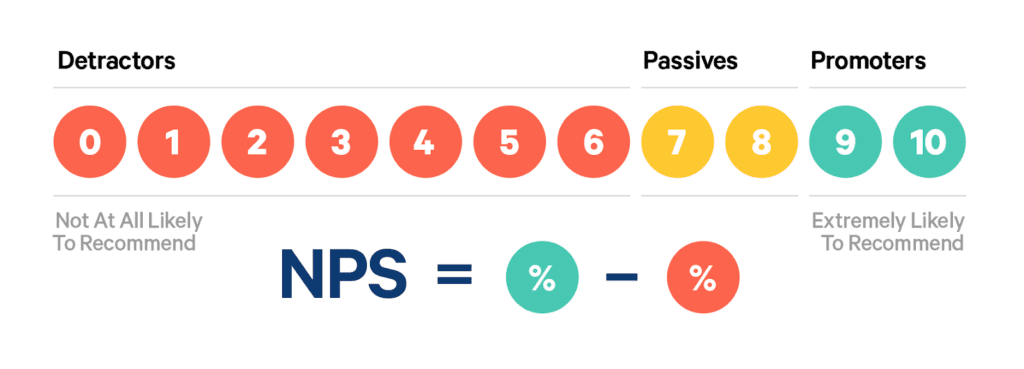
Interpreting NPS Results: Detractors, Passives, and Promoters
Customers are categorized into three groups:
- NPS Promoters: Enthusiastic and loyal customers likely to act as brand ambassadors.
- NPS Detractors: Unlikely to recommend the company and may actively discourage others.
- NPS Passives: Neutral customers who are satisfied but not motivated to promote the brand.
Let's see how you should react to each group of customers after finding out their score.
Detractors (Score 0-6)
Characteristics
- Unhappy Customers: Detractors are customers who are dissatisfied with your product or service. They rate their likelihood of recommending your company between 0 and 6.
- Negative Impact: These customers are likely to share their negative experiences with others, potentially damaging your brand’s reputation through negative word-of-mouth.
- Risk of Churn: Detractors are at high risk of leaving for competitors. Their dissatisfaction often stems from unmet expectations or poor experiences with your product or service.
Strategies to Address Detractors
- Engage and Understand: Follow up with detractors to understand their concerns. Personalized communication can help identify specific issues and demonstrate that you value their feedback.
- Resolve Issues: Address the problems raised by detractors promptly. Effective resolution can turn a negative experience into a positive one.
- Monitor Trends: Regularly analyze feedback from detractors to identify recurring issues and make systemic improvements.
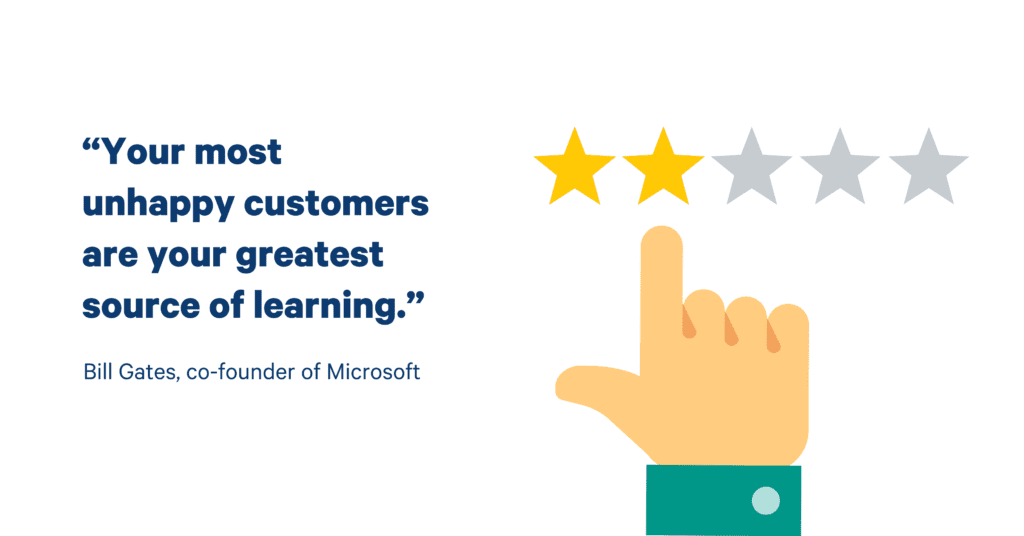
Passives (Score 7-8)
Characteristics
- Satisfied but Unenthusiastic: Passives are customers who are satisfied with your product or service but are not enthusiastic enough to actively promote it. They rate their likelihood of recommending your company between 7 and 8.
- Neutral Impact: They are unlikely to spread negative feedback but also unlikely to generate positive word-of-mouth.
- Vulnerable to Competitors: Passives may easily switch to competitors if they perceive a better offer or experience elsewhere.
Strategies to Engage Passives
- Enhance Satisfaction: Identify areas where passives feel improvements can be made and focus on enhancing those aspects.
- Increase Engagement: Provide incentives such as loyalty programs, special offers, or personalized experiences to convert passives into promoters.
- Collect Detailed Feedback: Use follow-up questions to gather more detailed feedback from passives to understand what’s holding them back from becoming promoters.
Promoters (Score 9-10)
Characteristics
- Highly Satisfied: Promoters are your happiest customers, rating their likelihood of recommending your company between 9 and 10.
- Positive Impact: They are likely to recommend your product or service to others, creating positive word-of-mouth and contributing to organic growth.
- Loyal Customers: Promoters are more likely to make repeat purchases and remain loyal to your brand.
Strategies to Leverage Promoters
- Encourage Referrals: Create referral programs that reward promoters for bringing in new customers.
- Share Their Stories: Feature testimonials and case studies from promoters in your marketing materials to build credibility and attract new customers.
- Maintain Engagement: Continue to engage with promoters by offering exclusive deals, early access to new products, or special recognition programs.
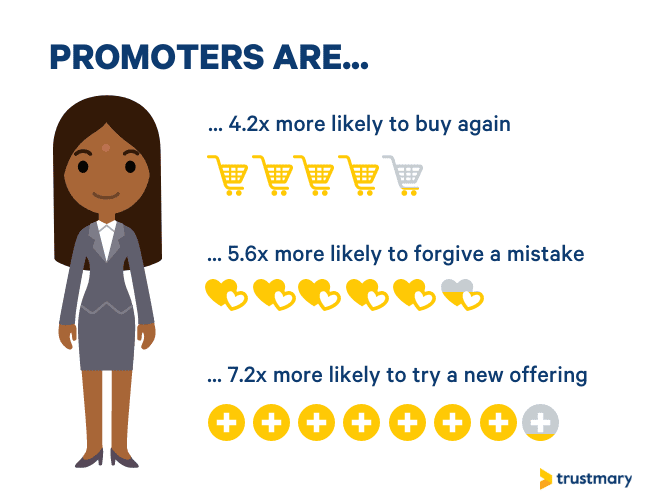
Importance of NPS in Customer Service
NPS is an invaluable tool for measuring customer loyalty and predicting business growth. Here’s why it matters:
- Customer Loyalty Indicator: NPS reflects customer loyalty, which is crucial for long-term success.
- Feedback Loop: Provides actionable feedback to identify areas for improvement and enhance customer satisfaction.
- Benchmarking Tool: Allows companies to compare their performance against industry standards and competitors.
- Simplified Metric: Easy to understand and communicate across the organization, making it accessible from frontline employees to executives.
Examples of NPS in Practice
Follow-Up Actions
Companies often follow up with detractors to understand their concerns and improve their experience. Promoters can be encouraged to share positive experiences through reviews or referrals.
Service Improvements
Insights from NPS surveys can lead to improvements in customer service processes, product features, or the overall customer experience.
Limitations of NPS
While NPS is a powerful tool, it has limitations.
NPS indicates overall satisfaction but does not provide specific reasons behind the scores. Additional qualitative feedback is often necessary.
That is why Trustmary applies an open feedback question after an NPS question to capture constructive criticism as well as customer testimonials.
The simplicity of the NPS survey might not capture the full spectrum of customer sentiment, especially in complex industries.
What if someone would like to recommend the service they received in one customer service interaction, but would not recommend the company overall for other reasons? Such reasons could be e.g. dissatisfaction with the company's management, ethical and moral reasons, environmental reasons, and many other factors.
Another limitation of the NPS survey is that it doesn't take into account cultural differences and mindsets.
It has been studied that while being as satisfied or dissatisfied, people from different cultures might give a different NPS score.
For example, Europeans tend to give lower scores than Americans. Consequently, American companies might have a higher Net Promoter Score even if their customers are not more satisfied than their European counterparts.
Collecting NPS Feedback
Website Surveys and Email Surveys
Run NPS surveys to collect customer feedback. You can choose between on-page/website pop-up surveys and email surveys. On-page surveys capture feedback while customers are still on your site, while email surveys give them time to experience the product or service before responding.
Other Methods to Collect NPS Feedback
Other methods include in-app surveys, SMS surveys, and phone surveys, offering various ways to reach your customers.
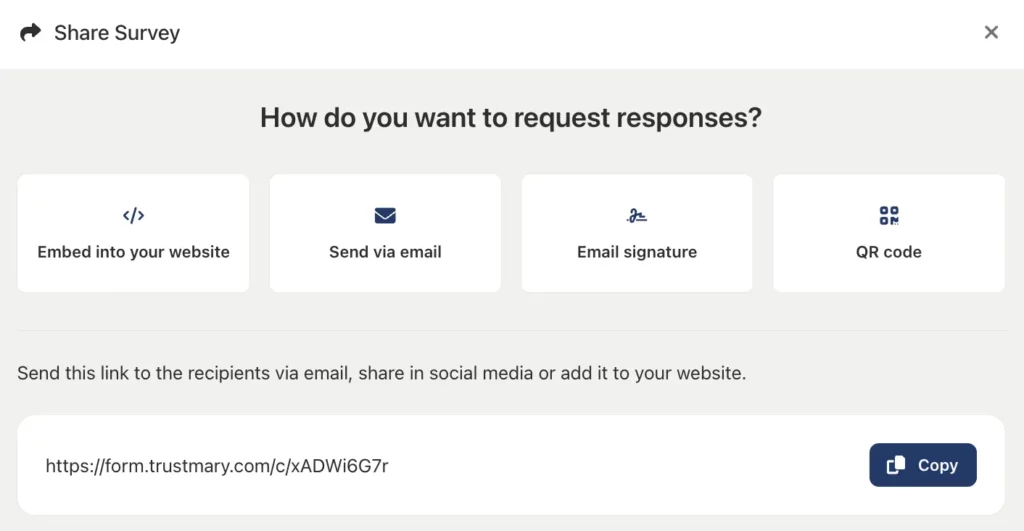
Analyzing NPS Results
Identifying Areas for Improvement
Analyze NPS data to spot trends and areas needing attention. Develop targeted strategies to address issues highlighted by detractors and enhance aspects that promoters value.
Tracking Performance Over Time
Monitor your NPS score continuously to gauge the effectiveness of implemented changes. Track trends as your company evolves and adjust your strategies as customer expectations change.
Improving Customer Satisfaction with NPS
Best Practices to Increase Customer Satisfaction
Use NPS to drive improvements and foster business growth. Leverage this metric to make data-driven decisions and enhance customer loyalty.
Using NPS to Close the Feedback Loop
NPS is more than just a number; the real value comes from the follow-up questions. Always close the loop with customers to understand the context behind their scores and address their concerns effectively.
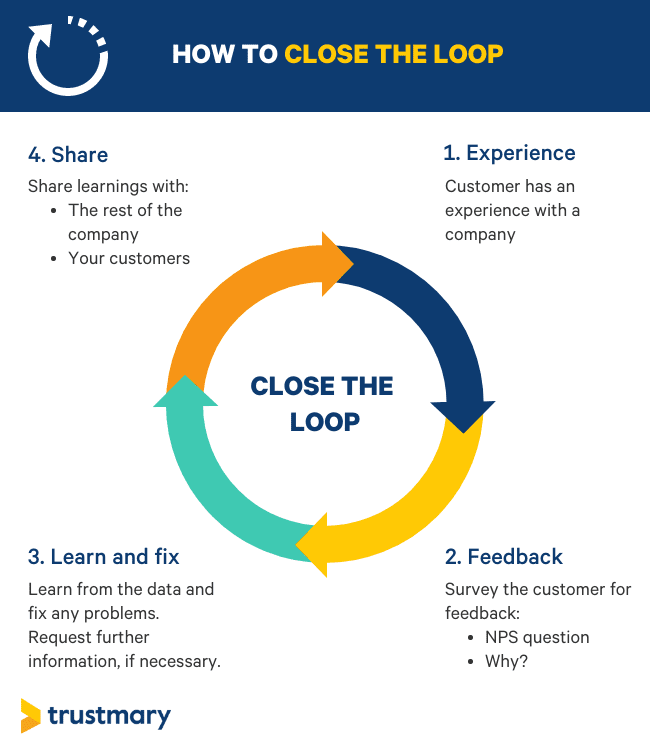
Real-life Examples
These real-life examples demonstrate how effectively implementing NPS can lead to significant improvements in customer satisfaction and business performance.
By regularly monitoring NPS and acting on the feedback, businesses can foster stronger relationships with their customers and drive growth.

Eezy Personnel: Boosting NPS from 46 to 70
Eezy Personnel, a leading recruitment and staffing company, successfully leveraged NPS to significantly improve their customer satisfaction.
Initially, their NPS was at 46, indicating room for improvement. By systematically gathering and analyzing NPS feedback, they identified key areas needing attention and implemented targeted improvements.
Their commitment to acting on customer feedback and closing the feedback loop resulted in their NPS soaring to 70.
This impressive increase underscores the power of NPS in driving customer satisfaction and loyalty. You can read Eezy Personnel's case here.
Saintex: High Response Rates with a Single Survey
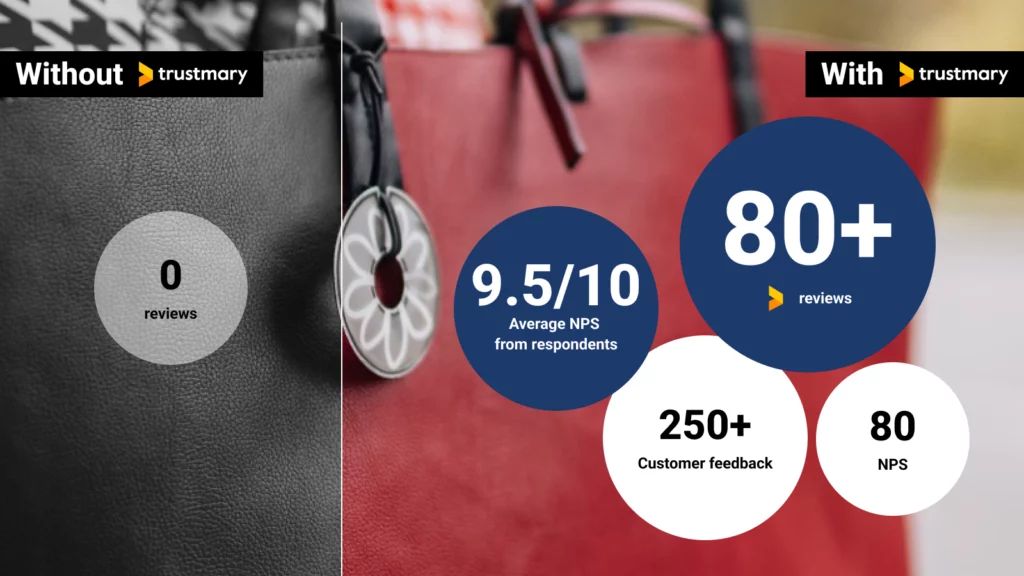
Saintex Oy, a family-owned Finnish manufacturer of branded products, successfully transitioned from relying on "gut feeling" to data-driven customer insights by adopting Trustmary.
Despite initial skepticism that B2B clients would not respond to surveys, the company set up a feedback process in under 30 minutes and received immediate, overwhelming engagement.
The initiative yielded nearly 300 responses with an exceptional NPS of over 80, confirming high satisfaction regarding their service and product quality.
Leveraging this success, Saintex has moved beyond a one-off survey to automated continuous feedback integrated with their ERP system, using the resulting testimonials on their website to build trust and validate their customer experience.
Read more about how Saintex got hundreds of B2B customer feedback within 30 minutes.
Monitor NPS for Optimal Results
NPS is a powerful tool for measuring and improving customer loyalty. By focusing on the likelihood of recommendations, businesses can understand customer satisfaction levels and identify areas for improvement.
Regularly monitoring NPS can lead to enhanced customer experiences and business growth. When you're doing customer experience design, NPS functions as a nice baseline.
Next Steps: Implementing NPS in Your Customer Service Strategy
- Implement NPS surveys to gain valuable insights into customer satisfaction.
- Use NPS to create a loyal customer base that promotes your company.
- Prioritize exceptional customer service to foster brand loyalty.